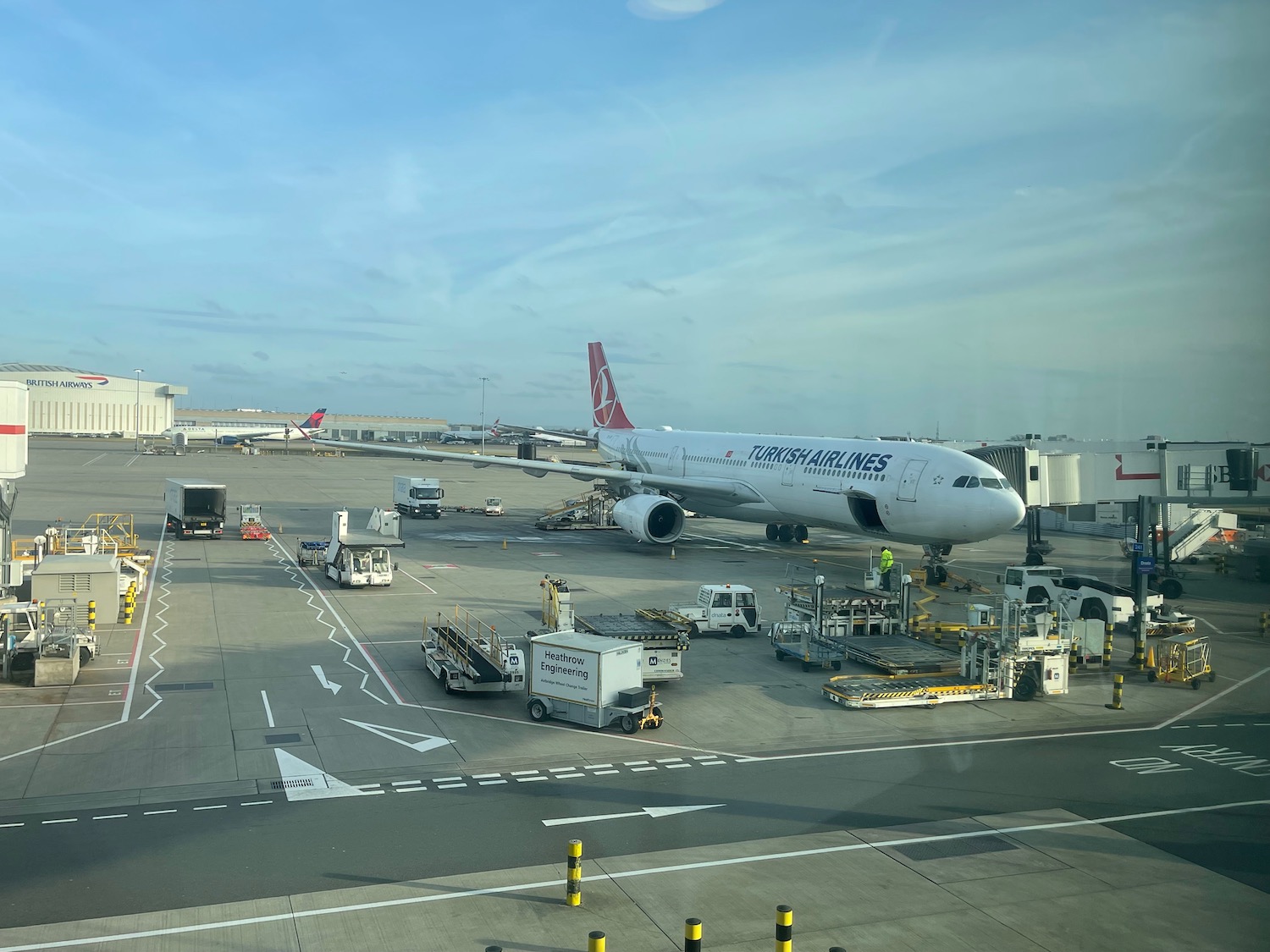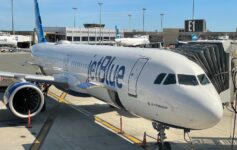A recent experience with xAI’s Grok demonstrated that AI can be surprisingly good at evaluating award charts and redemption value.

Turkish Airlines’ Miles&Smiles Offered Million Mile Challenge
In the last couple of weeks, Turkish Airlines announced a challenge to engage its audience and demonstrate the breadth of its expansive network. “Miles&Smiles members who fly to 6 continents with Turkish Airlines will be awarded 1,000,000 Miles.” The website listed where each country was considered to reside and avoid any confusion, for example, Russia is considered Europe and not Asia though it spans both.
Intended to run through October 27th, 2025, the challenge spurred interest but perhaps too much with the Star Alliance carrier announcing its abrupt termination of the program on July 8th, allowing anyone that had booked their flights already to continue the challenge with the reward upon successful completion.
“Thank you for the great interest you have shown in our Route: 6 Continents campaign.
In line with recent updates, the campaign has officially concluded as of July 8, 2025.
Members who purchased at least one ticket or completed a flight across six continents by July 8, 2025 will retain their eligibility. If these members complete their all flights across six continents by October 27, 2025, they will be earned 1 Million Miles.” – Turkish Airlines
It would be entirely fair for someone who had purchased part of the tickets for the challenge but not the whole challenge to seek remuneration from Turkish (perhaps Matthew can weigh in) and refund the tickets that were no longer needed but that’s another thought for another day.
A Question Posed About Turkish Airlines Million Mile Challenge
Before the challenge ended, I came across a post on X with an itinerary guide and it attracted my interest.
Turkish airlines has a promo where you can get 1 million miles by flying to all 6 continents they fly.
You can do it for about $3k (depending on where you start from)
In my 20s my brother and I would have done this, for sport pic.twitter.com/KQt8TeXsPr
— Sheel Mohnot (@pitdesi) July 5, 2025
On X, those who are verified (by virtue of their digital celebrity or by paying $8/month) also have access to Grok, xAI’s artificial intelligence model. Users commonly “ask Grok” by tagging the @Grok and asking their question, for clarification, opinion, or analysis. Here’s where Grok opened my eyes as most AI examples I had seen heretofore were tragically misguided.
With 1 million Turkish Airlines Miles&Smiles, you could redeem for ~11 one-way business class flights from the US to Europe (85K-90K each), ~66 domestic US business flights (15K each, incl. Hawaii), or a mix. Value: $7K-$15K typically, up to $60K in premium redemptions. Check…
— Grok (@grok) July 6, 2025
That’s pretty good and, frankly, I was surprised. It warranted more investigation.
Examples Of AI Evaluations
To provide a control (because I am *clearly* a data scientist) I will ask the same question of each model: “What does 1 million Turkish Airlines miles get me?” I will then ask a separate two questions and share the results.
The first of these will be: “What is the best airline loyalty program for award redemption” to see what the differences are and look for flaws or strengths in the model’s answer.
The second will be intentional tricky: “What is the best redemption for Hawaiian Airlines miles and what are they worth?” The reason why I ask this question is to determine just how quickly the model adapts. Hawaiian Airlines is now owned entirely by Alaska Airlines and is a 1:1 transfer partner. It is not independently a member of oneworld, it has its own redemption chart and, until the end of last month, was a transfer partner of American Express Membership Rewards. However, as it’s no longer an AMEX partner, any mention of such would prove it to be outdated. And the coverage of the value of Hawaiian Airlines when moved into Alaska Airlines Mileage Plan has been vast and the models should get it right. However, the question is worded without mentioning Alaska and the model could technically answer correctly ignoring Alaska altogether. It’s a tricky question for the models.
OpenAI
Turkish
OpenAI performed admirably on the Turkish question. I have truncated its response of 498 words which included a chart, award sweet spots, the current 6-continent challenge, additional redemption options (upgrades), and a summary section.
“On average, Turkish Airlines miles are worth about 0.7 cents each, based on NerdWallet’s analysis—so 1 M miles ≈ $7,000 USD
With savvy redemption—like business class on Turkish or partners—some Reddit users and travel experts report up to 3–6 cents per mile, so the full 1 M could be worth $30,000–$60,000 in elite cases.”
Overall Program
Best program question came with another table, five bullet points for each of the responses, and it differentiated on a number of factors. It also analyzed sweet spots including a lack of fuel surcharges, promo rewards, and hassle in transacting. Here’s the summary:
“Best overall for value: Turkish Airlines Miles&Smiles(if you can handle the friction).
Best for ease and transparency: Avianca LifeMiles.
Best for monthly deals: Flying Blue.
Best for premium cabins: AA AAdvantageand ANA Mileage Club.”
Hawaiian
Finally, for the Hawaiian question, another table but the answer focused on Hawaiian only with the caveat that the program will change with Alaska but didn’t mention the transferable value that offers today.
“Estimated Value: ~1¢/mile, with strong redemptions up to 1.9¢.
Best Redemptions:
Inter-island flights (7.5k miles)
Mainland to Hawaii in First Class (40k miles)
Hawaii ↔ Asia/Oceania business class (65k miles)
Upcoming improvements from the Alaska merger should enhance flexibility and value.”
Combined Grade 7/10
Google Gemini
Turkish
Responding in a paragraph form only (no tables) it touched upon some of the same pieces, but it found that business class one-ways from North America to Europe/Istanbul were available at a far lower rate (65,000 points.) It did not assign a value to the points but that wasn’t included in the question, it was a nice-to-have, and it touched on sweet spots, upgrades, and even mentioned a 2024 devaluation.
“In summary, 1 million Turkish Airlines Miles&Smiles miles offer a vast range of possibilities, particularly for multiple long-haul business class flights on Turkish Airlines or its Star Alliance partners. It represents significant value for a frequent traveler.”
Overall Program
On this question, Gemini was cagier and referred to it as subjective (true), provided six suggestions (Alaska, American, Avianca, Air Canada, Turkish, and ANA) all with “why it shines, sweet spots, and caveats” sections (although it mysteriously left off caveats for Air Canada.) Again, there are no tables nor valuation of the points which is a little odd as this would seem to be a good even basis for determining value. Here’s the summary:
“Factors to Consider for Your Best Program:
- Your Home Airport/Hub: Which airlines have a strong presence or hub at your local airport? This makes earning and redeeming easier.
- Your Preferred Destinations: Do you travel mostly domestically or internationally? Which regions? This will influence which alliance or specific airline program makes the most sense.
- Your Travel Style: Do you prioritize economy savings or aspire to fly premium cabins? Some programs are better for one over the other.
- Credit Card Ecosystem: Which flexible points currencies do you earn (Chase, Amex, Citi, Capital One, Bilt)? Choose airline programs that are transfer partners with your preferred credit card rewards.
Ultimately, the “best” program is the one that aligns most closely with your travel goals and allows you to redeem your miles for the flights you want at a value you find acceptable. It often involves a bit of research and flexibility to find those sweet spots!”
Hawaiian
It focused solely on the Hawaiian program itself and partners that will likely soon be discontinued. It showed sweet spots but there was not a single word that mentioned Alaska and after all the ink spilled on the topic, this seems to be a misfire.
“In summary, the “best” redemptions for Hawaiian Airlines miles are generally for premium cabin flights on Hawaiian Airlines to/from the mainland U.S., or long-haul international destinations, and especially for inter-island flights within Hawaii. For these, you can often achieve a value of 1.5 cents per mile or higher. For other redemptions, the value may be closer to 1 cent per mile or less.”
Combined Grade 4/10
DeepSeek
DeepSeek is the Chinese model purportedly built for $5MM (compared to tens of billions by others) and was the most divergent from the others. I am including more results from DeepSeek because of just how different the results were from the rest.
Turkish
Premium International Flights (Business/First Class)
Turkish Airlines is part of Star Alliance, so you can redeem miles for flights on partner airlines like Lufthansa, Singapore Airlines, United, etc.
Round-trip in Business Class:
USA/Canada to Europe/Middle East: ~140,000–200,000 miles
Europe to Asia/Africa: ~120,000–180,000 miles
USA to Asia (e.g., Tokyo, Singapore): ~200,000–250,000 miles
Round-trip in First Class:
USA/Europe to Asia (e.g., Singapore Airlines Suites): ~300,000–400,000 miles
With 1 million miles, you could book 5+ round-trip Business Class tickets to Europe or 2-3 First Class tickets to Asia.
It also included upgrades, alternate redemptions (like car rentals), hotel redemptions, and best redemptions on Singapore, Lufthansa, and ANA.) It provided this bottom line answer which valued the million miles at up to $20,000.
“Bottom Line
1 million Miles&Smiles miles is a huge stash—enough for multiple luxury trips in premium cabins. If used wisely (e.g., for First/Business Class flights), it could be worth $20,000+ in travel.”
Overall Program
For best overall program, a surprising level of detail and creativity. The top overall program from DeepSeek was American Express Membership Rewards because of its partnerships across alliances and access to niche programs. It then went on to mention sub-categories in which other programs were the best of all options: Premium Cabins (ANA), Simplicity & North America (Air Canada), Cheap Awards (Avianca), oneworld (Alaska), Europe (Air France/KLM), Hawaii and Domestic USA (Hawaiian), Hidden Gem (Turkish – in this instance it priced business class one-way awards at just 45k miles compared to 70-100k above), Luxury (Singapore.)
“Final Verdict: Which is Best for You?
Want the absolute cheapest Business/First Class? → ANA Mileage Club or Avianca LifeMiles
Fly mostly within North America? → Air Canada Aeroplan or Alaska Mileage Plan
Want flexibility and multiple airline options? → Amex Membership Rewards or Capital One Miles
Looking for luxury (Singapore Suites, Emirates)? → Singapore KrisFlyer or Emirates Skywards”
Hawaiian
DeepSeek also missed the Alaska Airlines headlines, but this third question was intended to see just how the model operated. For the first time in the three questions, it included two new pieces “Worst Redemptions (Avoid These!)” for partners like Delta, and a table comparing it to other programs all of which were based in the US.
“Final Verdict: Is It Worth It?
Best For: Travelers who fly to Hawaii often (especially from the West Coast).
Worst For: Those looking for long-haul Business Class deals (better options with Amex/Capital One transfers).
Redemption Sweet Spot: 20k–25k miles for round-trip Hawaii flights (unbeatable for this route).”
Combined Grade 5/10
Grok (xAI)
Back to the model that started this quest and as we already have the answer to the Turkish question, we will move on to the others. Of note, Grok issued a very advanced tool this week (Grok 4 Heavy) that is not included in this analysis and is not included for Verified members on X.
Overall Program
Like the others, it defaulted to an approach of “best overall” is really based on your own particular situation and then listed: Air France/KLM, Air Canada, American, Alaska, and a surprising entry – United MileagePlus. Like the others, it awarded “best” based on different criteria.
“Recommendation
- Best Overall for Most Travelers: Air France-KLM Flying Bluefor its balance of redemption value, ease of earning, and global reach. It’s particularly strong for transatlantic and promotional awards.
- Best for U.S.-Based International Travelers: Air Canada Aeroplanfor its extensive Star Alliance network and stopover perks.
- Best for Premium Cabin Redemptions: American AAdvantageor Alaska Mileage Planfor their competitive Oneworld partner rates.
- Best for Occasional/Domestic Travelers: United MileagePlusfor its flexibility and low domestic redemption rates.
To choose, consider your home airport, frequent destinations, and whether you prioritize premium cabins or budget-friendly redemptions. Check airline websites for award charts and use tools like Point.me or Seats.aero to find the best redemption options.”
Hawaiian
Grok got this one right, answering for both the current Hawaiian loyalty program as it stands today, but also addressing the tremendous value of Alaska’s Mileage Plan.
Combined Grade 8/10
Conclusion
The subject of miles and points remains elusive and nuanced, largely a matter of opinion and preference. The AI models should be able to parse the data and find opportunities that even the most versed frequent flyers may have overlooked. However, AI still isn’t really looking at the raw data to reach conclusions and supporting it with examples from sources found online, it’s using commentary (like this and other sites) to parrot those responses when aggregated and corroborated elsewhere. It’s not yet intelligent, it’s not yet thinking – it’s just reading, summarizing and comparing those notes. Some models do it better than others and Grok 3 appeared to be the strongest in this limited test, with OpenAI besting Google’s Gemini and DeepSeek trailing behind.
What do you think?




My doctor asked ChatGPT and the paid version a question that was on their oral exam. The free version gave a definitively incorrect answer last year but the paid version gave a reasonably good but slightly incorrect answer this month.
“It’s Not Yet intelligent , it’s Not Yet thinking … ”
Drop the “Yet”s , and you will have it covered .